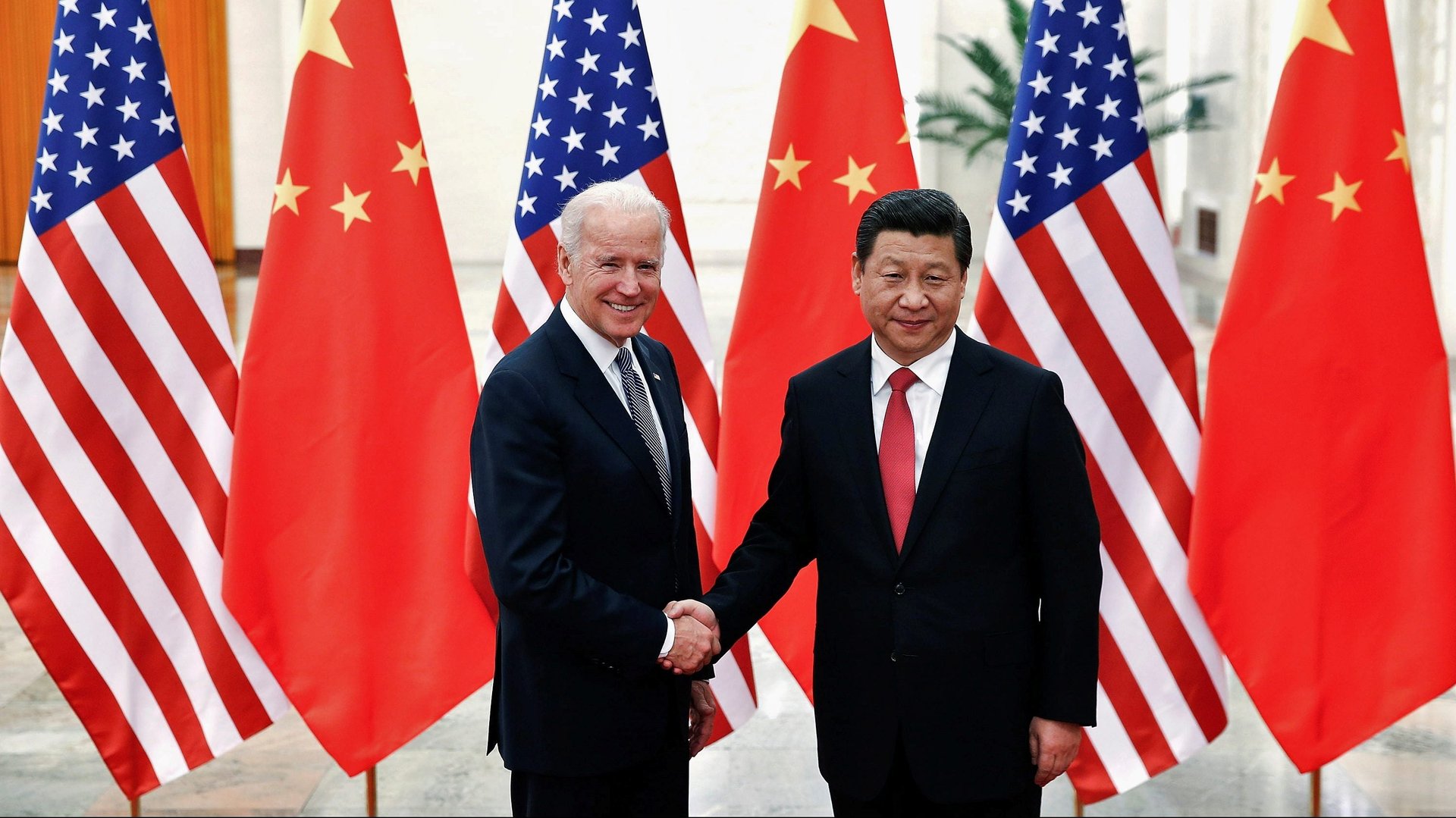Climate change is a rare opportunity for the US and China to actually get along
On the heels of a successful visit to China by US climate envoy John Kerry this week, Chinese president Xi Jinping accepted an invitation to take part in a virtual climate summit, hosted by the US and kicking off tomorrow (April 22).


On the heels of a successful visit to China by US climate envoy John Kerry this week, Chinese president Xi Jinping accepted an invitation to take part in a virtual climate summit, hosted by the US and kicking off tomorrow (April 22).
A spokesperson for the Chinese government said Xi would make an “important” speech at the summit that activists are hoping will include further commitments on de-carbonizing the Chinese economy. Meanwhile, the Associated Press reports that US president Joe Biden will “pledge to cut US greenhouse gas emissions at least in half by 2030.”
It’s a further sign that climate change has become one of the few areas in which the US and China can work constructively together. While Barack Obama called for a “pivot to Asia” in 2014, Donald Trump launched a trade war with China in 2018, and relations between the two countries have grown more and more tense since.
It’s a trend that has continued under the Biden administration: US secretary of state Antony Blinken recently called US-China relations the “biggest geopolitical test” of the 21st century. Washington and Beijing have major ongoing disputes over human rights and the status of Taiwan and Hong Kong. Experts fear that both countries could stumble into a war in the next few years.
That’s why Xi’s last-minute decision to attend the summit came as a surprise to many climate experts, including Isabel Hilton, the founder of China Dialogue, an independent discussion platform about China and the environmental. Hilton argues that Xi, who has staked his reputation on his willingness to stand up to Washington, is caught between a rock and a hard place. By attending the summit, he risks criticism at home for appearing to follow a US timetable. A top Chinese official, Le Yucheng, recently told the Associated Press that “addressing climate change is not what others ask us to,” but rather that China is “doing so on our own initiative.”
The goal of these kinds of summits is for all the participants to bring “new and shiny” climate commitments to the table, says Hilton. But Xi already pledged at the 2020 United Nations general assembly that China’s carbon emissions would peak by 2030 and that it would go carbon-neutral by 2060. If he ups the ante at tomorrow’s summit, it could look like he is bowing to US pressure. If he doesn’t add anything new, he might look like he is ceding the terrain to Biden.
Either way, Hilton says she is encouraged by the fact that China’s president agreed to take part in the summit in the context of US-China tensions: “If this is really a sign, despite all the antagonism, and the difficulties that we see in the geopolitics, that the climate conversation can stay on track, then that’s a huge positive.”